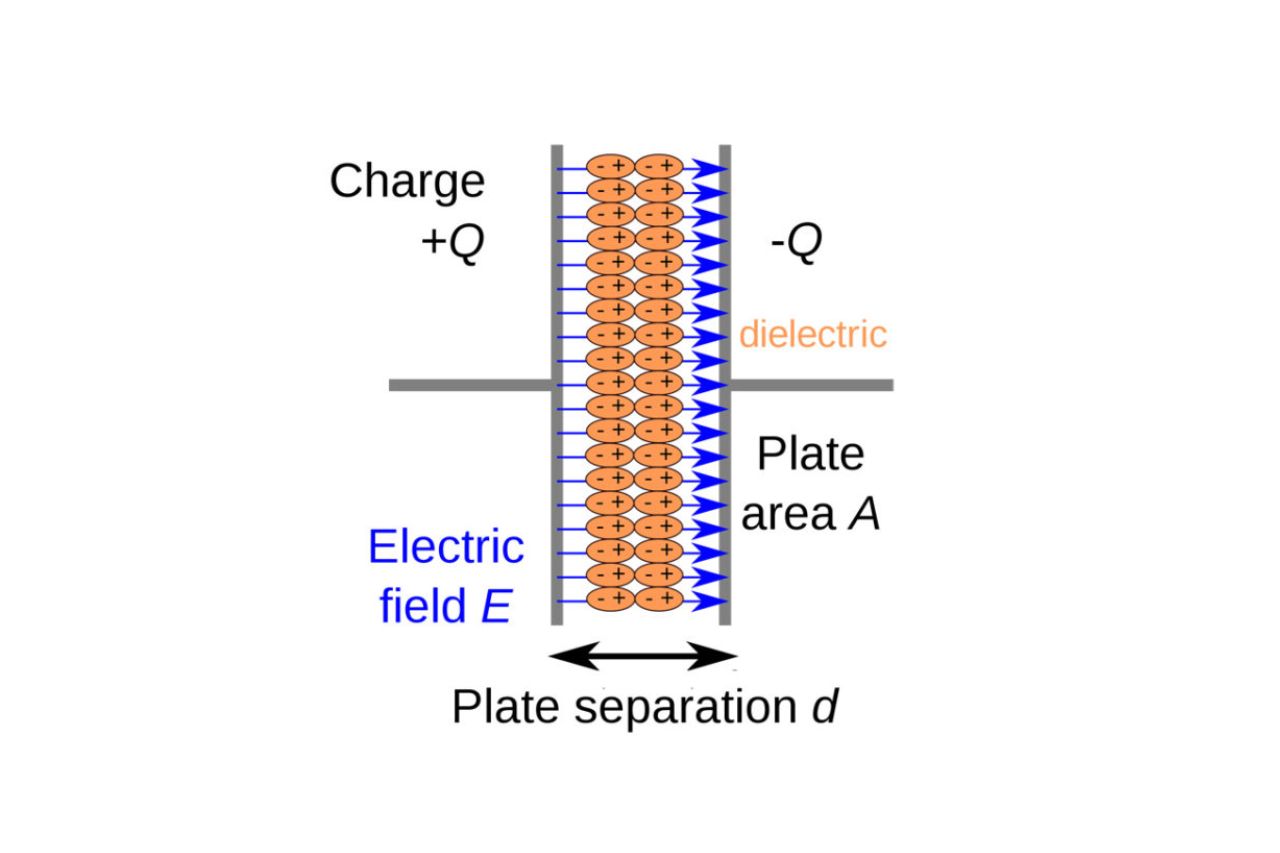
In the field of chemistry, the dielectric constant is a key property that helps us understand the behavior of materials when subjected to an electric field. It is an essential concept in understanding the interactions of molecules and the electrical properties of substances. The dielectric constant, also known as the relative permittivity, quantifies the ability of a material to store electrical energy in an electric field.
However, there is more to the dielectric constant than meets the eye. In this article, we will uncover 10 astonishing facts about the dielectric constant that will not only intrigue chemistry enthusiasts but also shed light on the significance of this parameter in various applications. From its relationship with the molecular structure of substances to its influence on the behavior of capacitors and insulators, the dielectric constant plays a fascinating role in the world of chemistry.
Key Takeaways:
- The dielectric constant measures how much a material can be charged up by an electric field, affecting its ability to store electrical energy and act as an insulator. It’s crucial for everything from preventing short circuits to designing high-capacity capacitors.
- The dielectric constant influences a material’s ability to dissolve substances, store electrical charge, and even withstand high electric stress. It’s a key player in technologies like smartphones, memory storage devices, and nanoscale devices.
Dielectric Constant – Unveiling the Polarizability of Materials
The dielectric constant, also known as the relative permittivity, is a fundamental property of materials that characterizes their ability to store electrical energy when subjected to an electric field. It measures the extent to which a material can be polarized in response to an applied electric field. Essentially, it tells us how much the material can be “charged up” when an electric field is present.
An Indicator of Electrical Insulation
The dielectric constant plays a crucial role in determining the electrical insulation properties of a material. Substances with higher dielectric constants are better insulators as they impede the flow of electric current. This property is utilized in various applications such as the insulation of wires and cables, preventing short circuits.
The Influence of Dielectric Constant on Capacitance
Capacitance, the ability of a system to store an electric charge, is directly influenced by the dielectric constant of the material between the capacitor plates. Higher values of dielectric constant result in higher capacitance, allowing for greater energy storage. This principle is utilized in the design of high-capacity capacitors used in electronic devices like smartphones and computers.
Dielectric Constant and Solvent Properties
Dielectric constant is a crucial property for solvents, as it determines their ability to dissolve various substances. Solvents with high dielectric constants, such as water, are effective at dissolving ionic compounds and polar molecules due to their strong solvation abilities. On the other hand, nonpolar solvents with low dielectric constants, like hexane, are better suited for dissolving nonpolar substances.
Temperature Dependency of Dielectric Constant
The dielectric constant of a material can vary with temperature. In some materials, the dielectric constant decreases as the temperature rises, while in others, it increases. This temperature dependency is often exploited in the design of temperature sensors and thermal actuators by utilizing materials with specific dielectric constant behavior.
Dielectric Constant and Ferroelectric Materials
Ferroelectric materials, which exhibit spontaneous electric polarization, possess a high dielectric constant. This property allows them to store electrical charge even in the absence of an external electric field. Ferroelectric materials find applications in various fields, including memory storage devices and piezoelectric sensors.
The Inverse Relationship with Dielectric Loss
Dielectric loss, also known as dissipation factor, represents the energy lost as heat in a dielectric material when subjected to an alternating electric field. Interestingly, there is an inverse relationship between dielectric constant and dielectric loss. Materials with high dielectric constants often have low dielectric losses, making them suitable for applications that require minimal energy dissipation.
Dielectric Constant and Dielectric Breakdown
Dielectric breakdown refers to the point at which a dielectric material fails and allows current to flow through it. The dielectric constant plays a significant role in determining the breakdown voltage of insulating materials. Higher dielectric constants generally result in higher breakdown voltages, ensuring the insulation remains intact even under high electric stress.
Dielectric Constant in Nanoscale Systems
The dielectric constant exhibits intriguing behavior when materials are reduced to the nanoscale. Size effects can significantly influence the dielectric properties, leading to deviations from bulk behavior. This aspect is essential for the development of nanoscale devices such as nanocapacitors and nanosensors.
The Role of Dielectric Constant in Dielectric Spectroscopy
Dielectric spectroscopy is a technique that measures the dielectric response of materials as a function of frequency. By studying the behavior of dielectric constant over a range of frequencies, valuable information about molecular motion, relaxation processes, and electrical conductivity can be obtained. This technique is widely used in fields such as material science, chemistry, and biophysics.
Overall, the dielectric constant is a fascinating property of materials that influences various aspects of electrical phenomena. Understanding and harnessing its effects allow us to design and develop innovative technologies that power our modern world.
Conclusion
In conclusion, the dielectric constant is a fascinating concept in the field of chemistry. It plays a crucial role in understanding the behavior of materials in the presence of an electric field. The dielectric constant measures the ability of a material to store electrical energy and affects its capacitance, polarization, and insulating properties.We have explored 10 astonishing facts about the dielectric constant that highlight its significance in various applications. From its relationship to the molecular structure of a substance to its impact on the speed of light in a medium, these facts shed light on the intriguing nature of dielectric constant.Understanding the dielectric constant can pave the way for advancements in areas such as electronics, telecommunications, and materials science. Further research and exploration in this field will uncover more secrets about this fundamental property of matter, leading to groundbreaking discoveries and innovations in the future.
FAQs
1. What is the dielectric constant?
The dielectric constant, also known as the relative permittivity, is a measure of a material’s ability to store electrical energy in an electric field compared to the vacuum. It determines the material’s capacitance and affects its insulating properties.
2. How is the dielectric constant measured?
The dielectric constant is usually measured by comparing the capacitance of a capacitor with a dielectric material to that of a vacuum or air-filled capacitor. The ratio of these capacitances gives the dielectric constant of the material.
3. What factors affect the dielectric constant?
The dielectric constant of a material is influenced by factors such as the molecular structure, temperature, pressure, frequency of the electric field, and the presence of impurities or defects in the material.
4. How does the dielectric constant impact capacitance?
A higher dielectric constant increases the capacitance of a capacitor, as it indicates that the material can store more electrical energy in an electric field. This property is utilized in various electronic components and devices.
5. What is the significance of dielectric constant in electronics?
The dielectric constant is crucial in the design and performance of electronic components such as capacitors, insulators, and printed circuit boards. It determines the materials’ ability to store charge, isolate signals, and reduce signal loss.
6. How does the dielectric constant affect the speed of light?
The dielectric constant influences the speed of light in a medium. A higher dielectric constant slows down the speed of light, as the electromagnetic waves interact more with the atoms or molecules of the material.
7. Can the dielectric constant of a material change?
Yes, the dielectric constant of a material can change under different conditions such as temperature, pressure, and frequency of the electric field. This property is utilized in various applications, including sensors and electronic devices.
8. How does the dielectric constant impact polarization?
The dielectric constant affects the polarization of a material, which is the alignment of its electric dipoles in response to an external electric field. A higher dielectric constant enhances the polarization effect, leading to a stronger response to the electric field.
9. Why is the dielectric constant important in materials science?
The dielectric constant is crucial in materials science as it helps determine the suitability of a material for specific applications. Understanding the dielectric properties of materials enables the development of new compounds with desirable electrical behavior.
10. What are some practical applications of the dielectric constant?
The dielectric constant finds applications in various fields such as telecommunications, energy storage, and capacitive sensing. It is utilized in the development of high-performance electronic devices, insulating materials, and energy-efficient technologies.
Was this page helpful?
Our commitment to delivering trustworthy and engaging content is at the heart of what we do. Each fact on our site is contributed by real users like you, bringing a wealth of diverse insights and information. To ensure the highest standards of accuracy and reliability, our dedicated editors meticulously review each submission. This process guarantees that the facts we share are not only fascinating but also credible. Trust in our commitment to quality and authenticity as you explore and learn with us.


